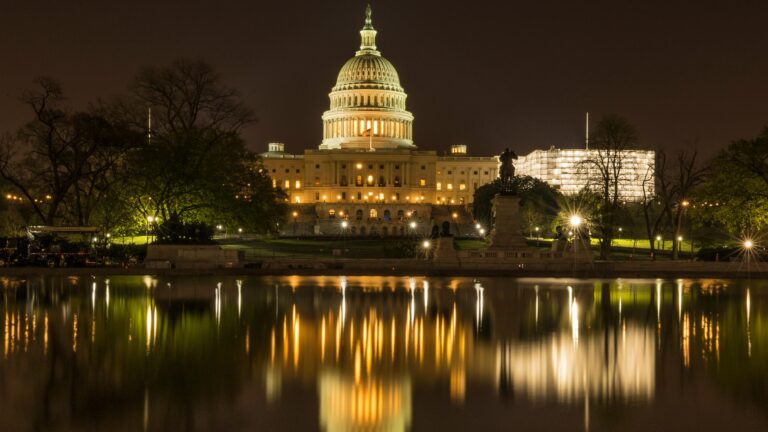Evidently, November is the busiest month in American politics. In odd years such as this one, however, the few gubernatorial elections that are on the ballot typically do not ‘cut through the noise’ for your average citizen. Thus, Democrats had to scheme to make sure that people do, in fact, pay attention this time: by refusing to budge on the filibuster to end the government shutdown despite being in the minority in both chambers of Congress.
The shutdown, thankfully, is now on track to be over, ending after 41 days—the longest in US history. And, to be fair, and despite what early polling and even the author of this very piece suggested earlier, it worked for Democrats. President Trump’s approval has taken a hit, the Democrats increased their lead in the generic ballot polling, and they won both gubernatorial elections by wide margins.
So, what does this all mean? Here are a few lessons from the eventful past few weeks in US politics.
1. Democrats Won Big in Virginia and New Jersey, but That Is Not Indicative of Midterm Results
Democrat Abigail Spanberger won her gubernatorial race in Virginia by 14.8 points, while her fellow Democrat Mikie Sherrill won in New Jersey by 13.7 points. Undeniably, those are wide margins, and a lot more than expected (more on the polling in the next point). Virginia swung to the left by 9 points compared to the 2024 presidential election result in the state, while New Jersey shifted to the left by 7.8 points in the same comparison. However, the two ‘off-year’ states shifted to the right when the Democrats were in power in the last cycle, from 2020 to 2021, by an even wider margin, about 12 points each (Virginia went from D+10 to R+2, giving Republican Glenn Youngkin the victory, while New Jersey went from D+16 to D+3). Still, Republicans had a disappointing midterm cycle the next year, losing a Senate seat and two gubernatorial seats, despite the economy also turning sour under President Biden.
In turn, the underperformance in the 2022 midterms did not prevent the GOP from winning big in the 2024 presidential elections. Back in 2022, Democrats won the governors’ races by double digits in the major swing states of Michigan and Pennsylvania—even the most optimistic Trump supporters would not have believed at the time that President Trump would be carrying both of those states, yet that is exactly what happened. In short, you cannot extrapolate from recent election results too far ahead. Especially given that the recent ones in Virginia and New Jersey had the—hopefully—unique shutdown circumstance surrounding them.
2. Polling Was Way off Again, Underestimating Democrats This Time
On election day, the RealClearPolitics polling aggregate showed Spanberger leading Republican Winsome Sears by 10.2 points—she ended up overperforming that by 4.6 points. The polling miss undercut Democrats in New Jersey as well, by a shocking margin: by 10.4 points to be exact, giving Sherrill just a 3.3-point lead heading into the election.
President Trump has been notoriously underpolled during his political career. Whenever he was not on the ballot, however, it seems that it is the Republicans who are routinely underestimated by pollsters in state-wide races, as was the case in the 2022 midterms and now. Will this trend hold for the 2026 midterms as well? That is no guarantee, so we will be coming into some of the key races basically ‘blind’, we will only have a clear idea of the results as actual vote counts start to come in.
3. Yes, Democrats Won the Shutdown — So Why Allow Them to Do It Again?
Let’s start with the most important news: with a 60–40 vote (52 Republicans and 8 Democrats voting in favour), the filibuster on the Continuing Resolution to fund the government was broken last night, on Sunday, 9 November, thus the longest-ever government shutdown in American history can be over at last with a simple majority vote today.
However, for the reasons listed in our intro, it is only prudent to admit that Democrats came out as the winners from the deadlock. In my first opinion piece about the shutdown (published even before it was started), I argued that this is an obvious system exploit: the minority party has a lot to gain by causing havoc, and the filibuster for simple funding bills provides a perfect opportunity to do just that. So why let them keep that effective weapon?
The government is now set to be funded until 31 January 2026. Should we get ready to go through this charade again in two and a half months? Can we really count on the Democrats not to rain on the parade for the 250th anniversary celebrations of the Declaration of Independence?
The arguments against removing the filibuster are also obvious: if Democrats get back into power, they would then have free rein to dramatically tilt future election prospects in their favour, with the addition of Puerto Rico and Washington, DC as states, relaxing election integrity laws, and granting citizenship to illegal aliens. We have also heard the counterargument to that plenty of times: they are going to do that anyway, so Republicans should do it first to enact their reforms.
President Trump himself has been pushing very hard in public for the removal of the filibuster lately (which will be an excellent talking point for Democrats arguing for it when they are in power, by the way). Even if we shy away from removing the 60-vote threshold to remove cloture altogether, granting an exemption to CRs to keep the government funded would be very necessary. There are already exceptions on the books, such as the reconciliation and rescission packages, and the approval of presidential nominees (all three of them have already been used by GOP senators in the second Trump administration).
Adding Continued Resolutions to that list would not allow either party to mandate sweeping changes in the nation; it would just make sure that the government is funded while one of them has the trifecta of power.
The argument against this proposal is that Democrats can then use that change as an excuse to remove the filibuster altogether. This makes little sense to me. With that, one assumes not only that they would not do so as things stand now, but that this one specific technicality with the obvious motivation to avoid constant shutdown is what would push them over the edge, and they would not have done so otherwise.
That is just adding a new layer on top of another layer of improbability to the extent that I find it hard to take it seriously—especially given that relying on it exposes the Republicans to continued shutdown chaos.
Related articles:







